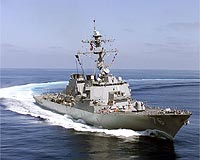 |
Washington DC (SPX) Oct 11, 2010 Riki Ellison, Chairman and Founder of the Missile Defense Advocacy Alliance (MDAA), www.missiledefenseadvocacy.org, has released a statement on the shortcomings of the Ground-Based Midcourse Defense (GMD) system in its ability to protect the U.S. homeland. Ellison is one of the top lay experts in the field of missile defense in the world. His comments are the following: "The protection of the United States from the threat of ballistic missile attack is a critical national security priority" was a statement released by Secretary of Defense Robert Gates earlier this year. Secretary Gates' statement was part of the introduction of the Ballistic Missile Defense Review (BMDR), the Department of Defense's current policy on missile defense. That policy lists six priorities, with the number one priority being "The United States will continue to defend the homeland against the threat of limited ballistic missile attack." Of the $8.24 billion or 1.2% of the 2011 Defense budget requested by the President for the Missile Defense Agency, 16.3% or $1.35 billion of it goes towards the Ground-Based Midcourse Defense (GMD) system that is responsible for protecting our homeland against ballistic missile attacks. The primary long-range limited ballistic missile threats to the U.S. homeland are seen to be from North Korea and Iran. Both countries continue to test and develop the range and quality of their ballistic missiles. The GMD system would also have the inherent capability of defending the U.S. homeland against future missile proliferation from rogue states as well as an accidental launch from Russia, China, or other countries with nuclear long-range ballistic missile capabilities. Next month the 30th Ground-Based Interceptor (GBI) is scheduled to be placed into a silo at Fort Greely, Alaska. Thirty is the total number of operational, deployed GBIs the Secretary of Defense and the President want in place for the protection of the U.S. homeland against a limited ballistic missile threat. The previous President and the same Secretary of Defense had requested over 50 GBIs for this same mission. In order for the GMD system to equally protect the U.S. homeland with confidence, including the eastern U.S. from Iran and threats to the east, the Department of Defense must develop, test and deploy an eastern architecture of sensors, radars and forward based interceptors. Also, the GMD system must prove out and test its capability to provide much greater confidence so that there is equal trust in each of the thirty interceptors. There has not been a successful GBI test in almost two years and the new version of the kill vehicle that is carried on most of the GBIs has not yet had a successful intercept test. The GMD system today must shoot three or four interceptors in order to gain high confidence that it will intercept a single incoming ballistic missile threatening our homeland Additionally, replacement, modernization and upkeep of all the GBIs must be continued to give confidence in the system as these systems age and are stationed in harsh environments. With continued robust testing of the GBI needed and the upcoming termination of the first missile field at Fort Greely, which holds the six oldest GBIs, it would seem that between now and 2030 a lot more than the five GBIs that are being requested by the administration will be needed.
Share This Article With Planet Earth
Related Links Missile Defense Advocacy Alliance Learn about missile defense at SpaceWar.com Learn about nuclear weapons doctrine and defense at SpaceWar.com All about missiles at SpaceWar.com Learn about the Superpowers of the 21st Century at SpaceWar.com
 Raytheon To Demo S-Band Radar Design For Navy
Raytheon To Demo S-Band Radar Design For NavyTewksbury MA (SPX) Oct 11, 2010 Raytheon received a $112.3 million contract to design and develop an S-band radar and radar suite controller technology demonstrator for the U.S. Navy's new Air and Missile Defense Radar (AMDR). This highly advanced system will provide unprecedented capabilities for the Navy's Arleigh Burke-class destroyers. AMDR is being developed to fill capability gaps identified by the Joint Requiremen ... read more |
|
| The content herein, unless otherwise known to be public domain, are Copyright 1995-2010 - SpaceDaily. AFP and UPI Wire Stories are copyright Agence France-Presse and United Press International. ESA Portal Reports are copyright European Space Agency. All NASA sourced material is public domain. Additional copyrights may apply in whole or part to other bona fide parties. Advertising does not imply endorsement,agreement or approval of any opinions, statements or information provided by SpaceDaily on any Web page published or hosted by SpaceDaily. Privacy Statement |